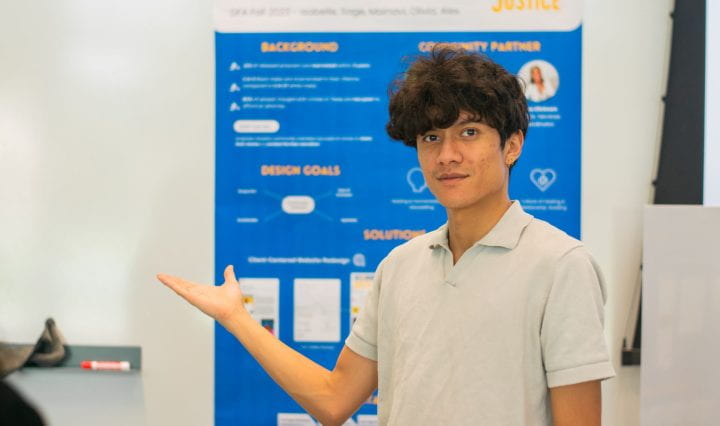
Final Review: Team Restoring Justice
Here’s our poster featuring our final design — a letter wall and outreach ideas — for Restoring Justice: Continue reading Final Review: Team Restoring Justice

Here’s our poster featuring our final design — a letter wall and outreach ideas — for Restoring Justice: Continue reading Final Review: Team Restoring Justice

After our final review, our team focused on outlining how our work can be implemented. On that end, we created an implementation guide. The guide reviewed the progress we made this semester, from initial findings about our problem space, to … Continue reading Implement: Team The Walk
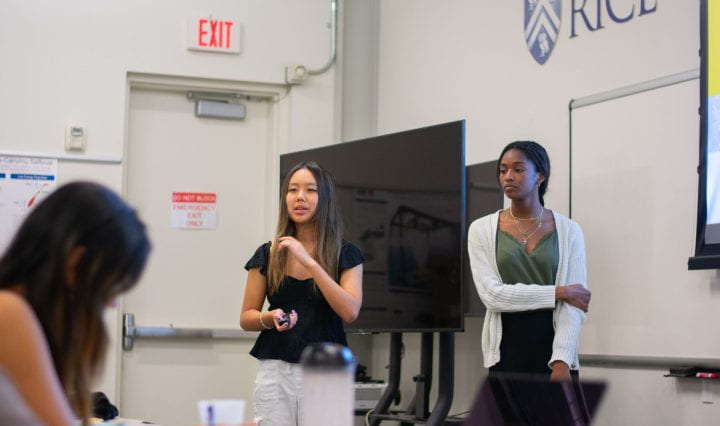
Here’s our presentation from Mid-semester review: Continue reading Mid-semester Review: Team Restoring Justice
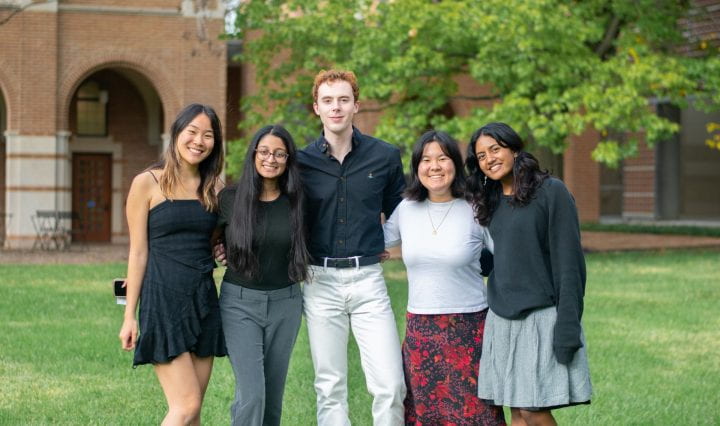
Jessica is a single mom who was accused of robbery. She is being detained in prison before and during trial as she cannot post bail. This has upended her life; she is now separated from her young son, and she has lost her job. She fears that her involvement with the criminal justice system will decrease her prospects for finding a job, and she worries about housing instability. Unable to afford a lawyer, she turns to Restoring Justice, hoping that someone will listen to her and defend her case as well as help her and her family find stability in … Continue reading Immerse: Team Restoring Justice
This week, our team outlined our prior knowledge about the overarching issue of mass incarceration, including facts and personal experiences/connections. We furthermore identified and unpacked our existing assumptions, including that people largely believe that those in prison have definitely done something immoral and/or are more dangerous. People also generally think that putting people in makes their community safer. Implicit bias leads people to associate fear and anger with incarcerated individuals. Exploring our assumptions and prior knowledge enabled us to identify 4-5 problem spaces that represented more specific facets of the problem—racial bias; misperception/misunderstanding of incarcerated individuals; the rise of mass … Continue reading Identify: Team Restoring Justice
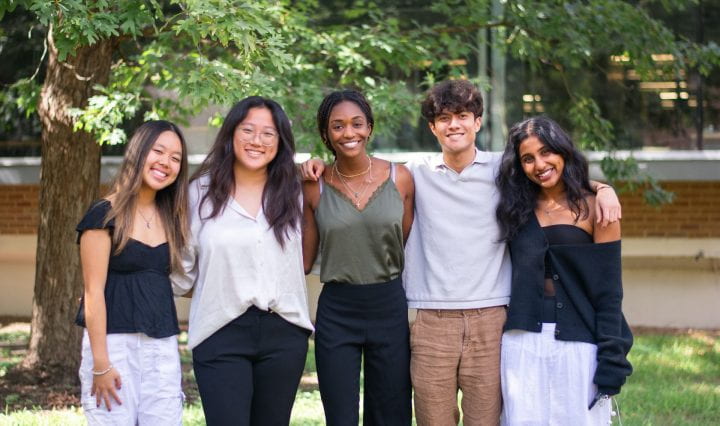
We are Team Restoring Justice. Restoring Justice is a local non-profit organization that works on addressing mass incarceration and assisting previously incarcerated individuals with accessing economic resources. Each one of us is passionate about this cause, and two of our … Continue reading DForientAtion: Team Restoring Justice
Throughout the test phase, our team focused on how our solution will be used by users. We decided on many questions to ask users to get feedback on our proposed website design and retrofitted donation form. We compiled these questions in order to better understand our user base and what their needs might be for our prototype. Overall, our team decided we want our solution to be easy to navigate when anyone visits The Walk’s website. In addition, we think it may be most important that our community partner be able to update and change our website model easily after … Continue reading Test: Team The Walk
This week, our team focused on addressing The Walk’s outreach issues by starting the development of a new, user-friendly website. Low-fidelity prototyping was our first step through wireframes to quickly map out the website’s design without extensive resources, ensuring that we address core features like event information, donations, and contact options based on our previous insights. Despite a lack of response from the organization’s contact responsible for the website, we went ahead with wireframes. These designs aim to clarify what the website should include before we go into creating a fully functional site. This approach not only streamlines the design … Continue reading Build: Team The Walk
We had an awesome time at mid-semester review! Our CP attended our presentation and we got a lot of helpful feedback from him and our studio members. Some notable feedback that we received includes suggestions to ensure our website solution is easy to implement, sustainable long-term, and that we should reach out to organizations that are trusted by underrepresented groups. Continue reading Mid-Semester Review: Team The Walk
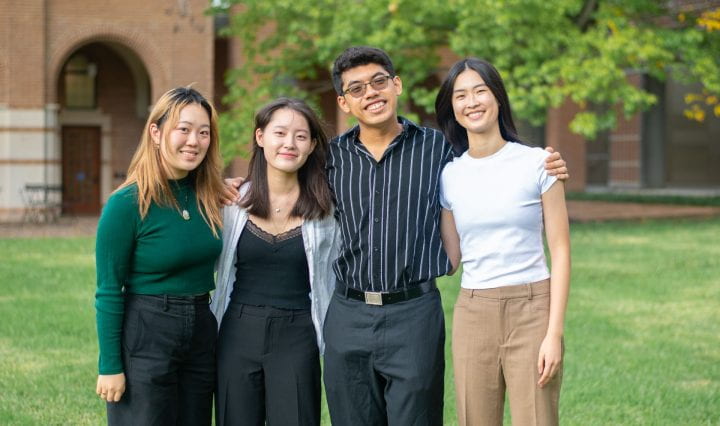
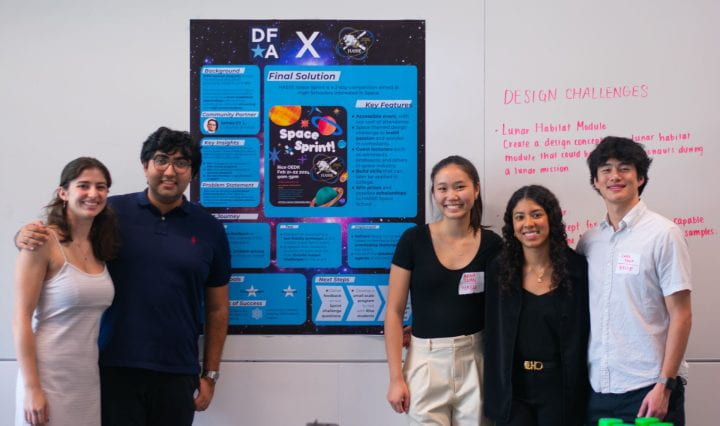
Here’s our poster featuring our final prototype — a hackathon — for HASSE. Continue reading Final Review: Team HASSE
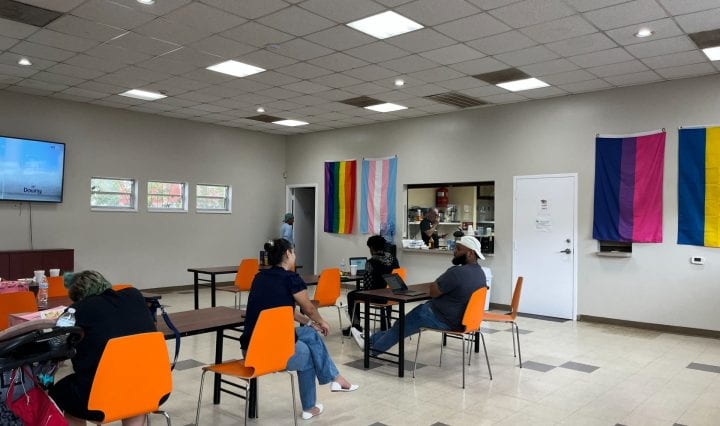
To start our testing process, we first sent our prototype of the feedback form to Carrie, who informed us that ideally, all the language we use would be 3rd to 5th grade reading level, and that by keeping it anonymous … Continue reading Test: Team Tony’s Place
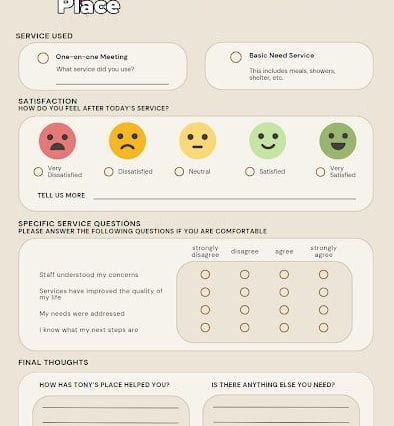
To begin our Build process, we went through the user research we collected from our site visit to Tony’s Place. After reviewing our research, we concluded that things were going well with Tony Place’s one-on-one services, and there wasn’t a … Continue reading Build: Team Tony’s Place
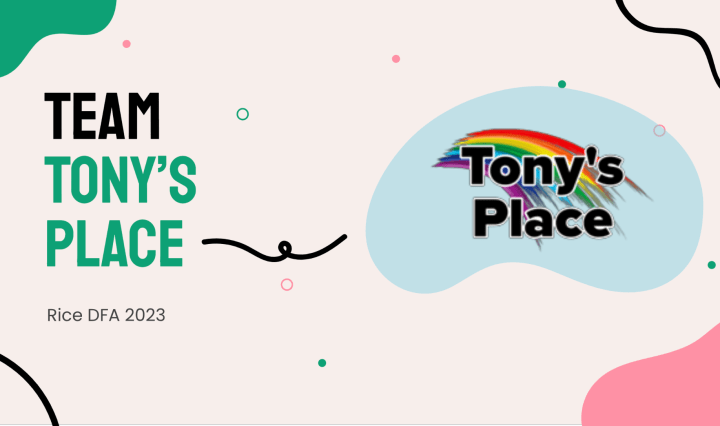
Our midsemester review was a little unconventional in that we had to that point still not been able to collect any user data. Thus, a lot of the conclusions and ideation that we had were from proxy sources and online … Continue reading Mid-Semester Review: Team Tony’s Place
After weeks of conducting research, holding user interviews, and highlighting key insights, we decided on a final design space of digital engagement and outreach. To address our “How can we” statement, our team engaged in a brainstorming session, where we discussed our initial thoughts and ideas and grouped them into potential implementable solutions. Some ideas include designing a specific marketing campaign strategy and developing a plan to address logistical feedback from this year. Ultimately, to maximize our impact on digital outreach, we landed on a final solution of redesigning the existing website. We went through the existing website and highlighted … Continue reading Ideate: Team The Walk
We started working on the low fidelity prototype of our HASSE solution– creating a “Space Sprint” event over a weekend where high school students compete against each other in a space related challenge. Full of prototyping their ideas, presenting, as well as lectures and interactive sessions with Astronauts and other industry professionals, this idea allows High Schoolers to get involved with HASSE and pursue their passion for space science. As a team we must test the details of what the exact challenge will be– will they build something physical, draw something, what will the scope be, etc. To start our … Continue reading Build: Team HASSE
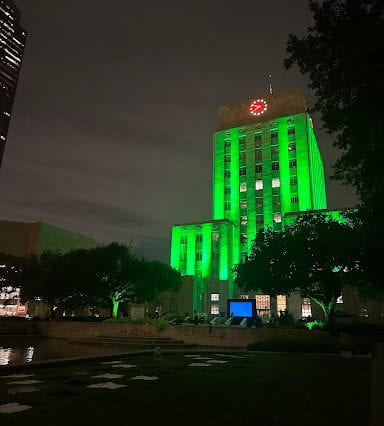
This week, we reflected on the problem we are trying to solve for The Walk. After visiting the event itself in person, there were a few things that jumped out at us. However, we pushed ourselves to think even deeper … Continue reading Reframe: Team The Walk
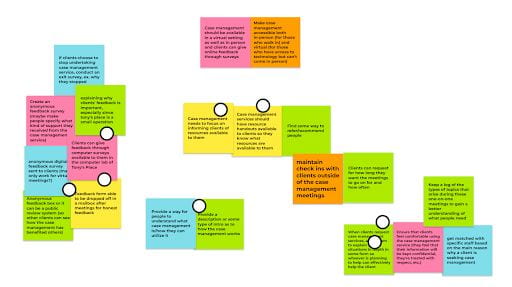
For our ideate process, our team started by individually brainstorming potential solutions on sticky notes and then came back together to organize them into different groups. After each member voted on the ideas that they liked, we found that there … Continue reading Ideate: Team Tony’s Place

Maria, a 20 year old college student, from Houston, has always been passionate about mental health awareness. She’s involved in mental health awareness efforts at her college but wants to get involved in local mental health initiatives in the broader … Continue reading Immerse: Team The Walk

We finished up the immerse stage by conducting user research through proxies via LGBTQ+ organization articles, testimonies online, etc., as we still have not been able to connect with users personally. We compiled all of our research into key insights, … Continue reading Reframe: Team Tony’s Place

Our problem space is important because mental illness affects millions of people yet is highly stigmatized and thus rarely discussed. More specifically, Texas’s quality of mental healthcare is ranked last in the nation and Houston’s suicide rate increased by a … Continue reading DForientAtion: Team The Walk!
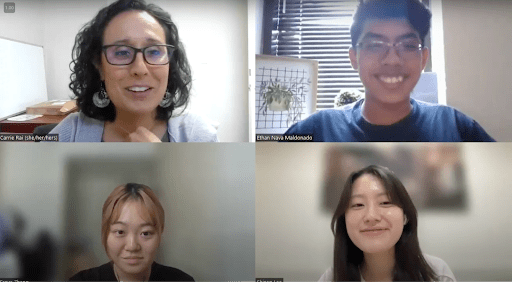
Due to the vulnerability and safety concerns of the user population, we haven’t had the opportunity to connect with the users personally yet. However, through our secondary research, we found that many LGBTQ+ youth have unique intersectionalities and circumstances that … Continue reading Immerse: Team Tony’s Place
Through team discussion, we decided that the main problem to tackle is making existing resources that Tony’s Place offers more accessible to and better utilized by LGBTQ+ youth in Houston. Some assumptions that our team made were that LGBTQ+ youth may be scared to reach out for help, especially surrounding vulnerable topics like homelessness, and that their confidentiality/safety would be of high concern. Discussing our prior knowledge, assumptions, and questions helped our team get on the same page about our problem space and pushed us to acknowledge our initial understanding of the users of Tony’s Place. Continue reading Identify: Team Tony’s Place
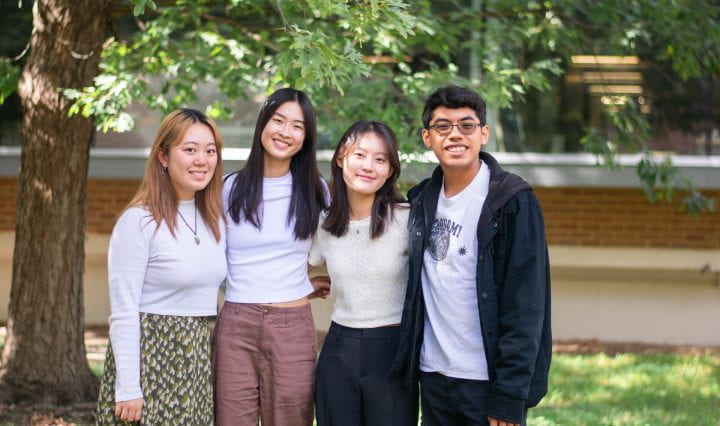
We are team Tony’s Place! Our team members are Ethan, Shieun, Freya, and Slim! Our project space is important because we believe there is a lack of resources for unhoused queer youth in the Houston community. Continue reading DForientAtion: Team Tony’s Place!
Leading up to MSR, our team was still working through Reframe, having faced some setbacks with outreach to Houston high schools. We only received a limited amount of feedback from our surveys, even having reached out to several administrators at over a dozen local high schools. Despite this, we met with our community partner, James, to debrief. With his feedback in mind on ways to help HASSE, we came into MSR with some insights on what has worked in the past and ideas of what we might try in the future. We wanted our MSR presentation to introduce the audience … Continue reading Mid-semester Review: Team HASSE
After our week of Reframe and sending out surveys to existing STEM programs, we are still waiting to collect our responses. In the meantime we are researching what makes other STEM programs successful and what can we implement in our final product. We had enough information to look at our problem from another perspective: we wanted to make the HASSE program more accessible to more people. Their current program is expensive which has lead to not as many people in the Houston area knowing about HASSE. As we move forward, we want to create something that makes STEM and Space … Continue reading Ideate: Team HASSE
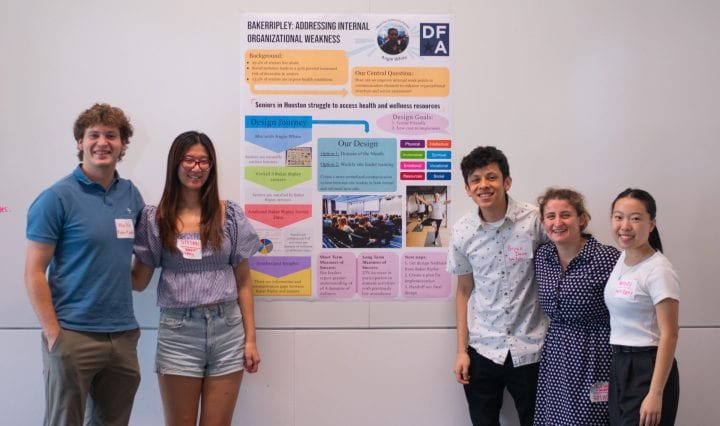
The most challenging aspect our team faced this past semester was connecting with our CP, Angie. In our first attempts to meet with her, she made a last-minute cancellation, forcing us to reschedule our meeting with her to an unfavorable … Continue reading Final Review: Team Baker Ripley

This week, Team HASSE expanded our outreach to teachers and parents to understand the needs of Houston’s STEM education community. We contacted 12 high schools in the Greater Houston area to engage with educators, gathering insights into existing STEM programs. … Continue reading Reframe: Team HASSE
After building out our recommendations for Baker Ripley, we sought to test these ideas by sending a form out to the site specialists (people who run each Baker Ripley senior center) and get their point of view on these changes as well as discuss the ideas with Angie and Sykra. While we did not get any responses yet from the survey, Angie and Sykra were both very receptive to our suggestions and based on their feedback we decided to re-design our prototype focusing more on creating “one-pagers” that could be used for site supervisor training. Continue reading Test: Team Baker Ripley